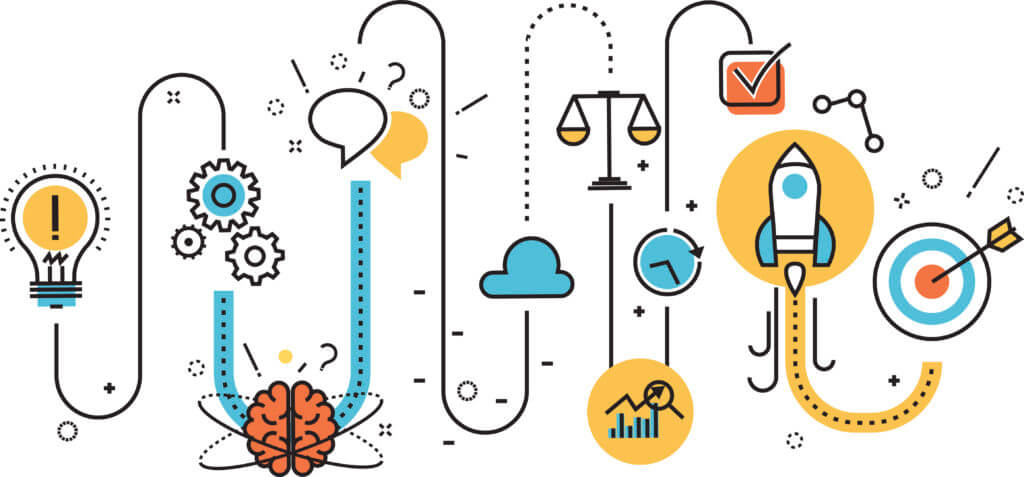Design thinking is a methodology for problem-solving and innovation that is characterized by its human-centered, iterative, and collaborative approach. It encourages the creative exploration of ideas and the development of innovative solutions. While there can be variations in how design thinking is applied, the methodology generally follows these key principles and stages:
7 Design Thinking Framework Methodology
1. Empathize: This stage involves understanding the problem or challenge from the perspective of the end-users or stakeholders. Key activities include:
- Conducting user interviews to gather insights and understand their needs and pain points.
- Observing users in their environment to gain a deeper understanding of their behaviors and context.
- Building empathy for the people you’re designing for.
2. Define: In this stage, you synthesize the information collected during the empathize stage and define a clear and specific problem statement. Key activities include:
- Identifying patterns and themes from the user research.
- Creating a user-centered problem statement that focuses on the needs and pain points of the users.
3. Ideate: This is the stage of generating a wide range of creative ideas and potential solutions to the defined problem. Key activities include:
- Brainstorming sessions to encourage free thinking and creativity.
- Using techniques like mind mapping, sketching, or brainstorming exercises to generate innovative concepts.
- Avoiding immediate evaluation of ideas to encourage the flow of creativity.
4. Prototype: During this stage, you create low-fidelity prototypes or representations of your ideas. These prototypes can be physical or digital and serve as a means to visualize and test your concepts. Key activities include:
- Developing quick and low-cost prototypes that can convey the essence of your ideas.
- Iterating on these prototypes based on feedback and learnings.
5. Test: This stage involves putting your prototypes in front of actual users to gather feedback and insights. Key activities include:
- Conducting usability tests to observe how users interact with your prototypes.
- Collecting user feedback to understand what works and what needs improvement.
- Using the feedback to refine and iterate on the solution.
6. Implement: Once a refined and tested solution is identified through the design thinking process, it’s time to implement it. Implementation can include scaling up the solution, launching it to a broader audience, or integrating it into existing systems or processes.
7. Evaluate: After the solution is implemented, it’s essential to continuously assess its effectiveness in the real world. Collect data and user feedback, make improvements as needed, and iterate on the solution to ensure it meets the users’ needs.
Design thinking is a flexible and iterative methodology that encourages collaboration and user-centered problem-solving. It can be applied to a wide range of challenges, from product design to process improvement, and it’s widely used in various industries to foster innovation and customer satisfaction.
Learn more: What is Design Thinking?
Most Recent Posts
Explore the latest innovation insights and trends with our recent blog posts.













